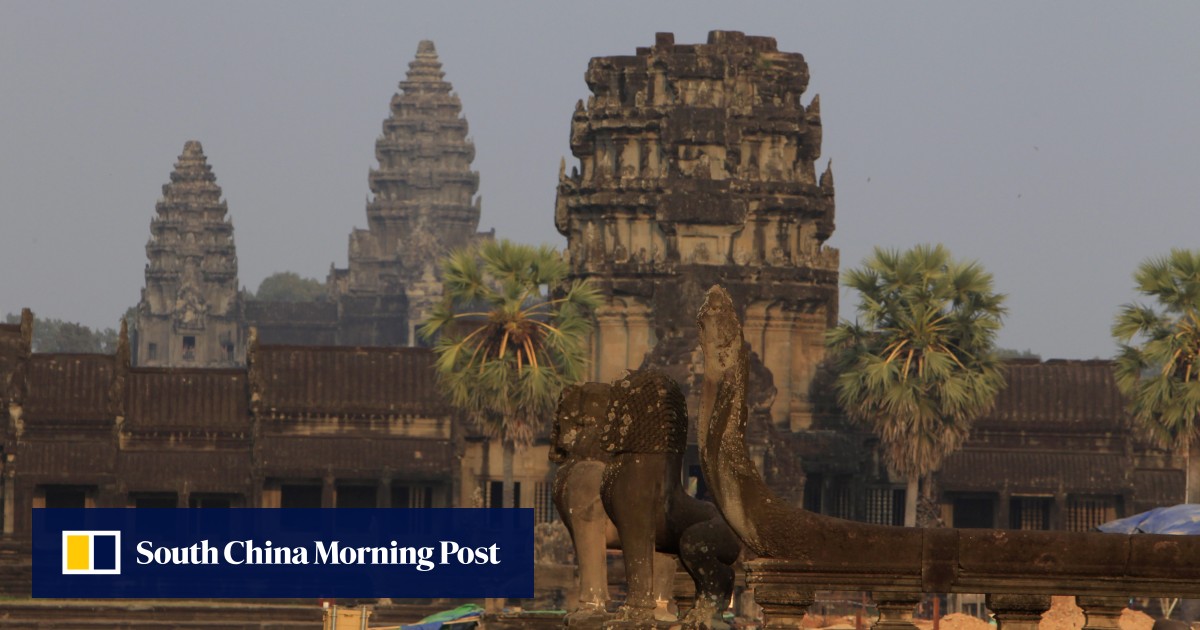Paris-based Unesco responded that it was “deeply concerned about the allegations” and ordered Cambodia to report on the state of conservation at the Angkor site about a year earlier than previously planned, while urging “them to ensure that any relocation is voluntary”.
Squatters who have been coming in, and these squatters are the people who are being relocated, not the people living in the traditional villages
The Angkor site spreads across some 400 square kilometres (155 square miles), and contains the ruins of Khmer Empire capitals from the 9th to the 15th centuries, including the temple of Angkor Wat.
Unesco calls it one of the most important archaeological sites in Southeast Asia, and it is critical to Cambodia’s tourism industry.
In its report to Unesco, Cambodia argued it was moving only people involved in the “illegal occupation of heritage land” and not those identified by Unesco as inhabitants of traditional villages shortly after the Angkor complex’s inscription in 1992 as a World Heritage site.
“At the Angkor heritage site there are 112 villages where people have been living for generations, but there are squatters who have been coming in, and these squatters are the people who are being relocated, not the people living in the traditional villages,” said Long Kosal, spokesman for the Cambodian government body in charge of the Angkor Wat site.
“The people in the villages are part of our heritage; that is why we call Angkor a living heritage site.”

Amnesty said, however, that it appears Cambodian authorities had decided to “cherry-pick” what details were included in their new report, and that it remained extremely unclear who could be considered part of the 112 villages.
“It was never made clear to the families who those families were … and therefore who would ultimately have to leave and who would get to stay,” said Montse Ferrer, the head of Amnesty’s research team investigating the Angkor Wat resettlements.
“So fast forward to now, that confusion remains on the books,” she said, speaking from Geneva, Switzerland.
Cambodia’s reopened Siem Reap sets its sights on ‘quality tourism’
Cambodia’s reopened Siem Reap sets its sights on ‘quality tourism’
She said several families relocated told Amnesty that they had been living around the Angkor Wat site for generations, and had not wanted to leave their homes. She added that their research found that very few people had been resettled “voluntarily”, as Amnesty would define it, with many being threatened or otherwise coerced.
Amnesty said the threats came from the highest levels, noting in its November report a speech from former prime minister Hun Sen in which he said people “must either leave the Angkor site soon and receive some form of compensation or be evicted at a later time and receive nothing”.
However, Unesco in November emphasised that it has “always categorically rejected the use of forced evictions” and “that at no point did it request, support or participate in the programme”.
The agency refused to comment on Cambodia’s new submission, saying that it still needed to be analysed by its experts, but that it “stands by its previous statement regarding the situation in Angkor”.

Cambodia began moving people from the site in 2022. To date about half of an estimated 10,000 families have been relocated, primarily to a vast new settlement known as Run Ta Ek, about 25km (15 miles) away from the Angkor Wat site.
New arrivals were given small plots of land, a two-month supply of canned food and rice, a tarpaulin and 30 sheets of corrugated metal to use to build a home, according to Amnesty’s findings.
Book review: Hun Sen’s Cambodia by Sebastian Strangio
Book review: Hun Sen’s Cambodia by Sebastian Strangio
Conditions had improved as authorities have added much of the necessary infrastructure to support the settlement, Ferrer said, but they still have not addressed the debt incurred by many in building their new homes nor the loss of income suffered by moving them.
During a visit to Run Ta Ek in December, Hun Manet referenced Amnesty’s allegations that Cambodia was responsible for human rights abuses, saying improvements were being made rapidly and that “you should come and see for yourself within a year”.
In its report to Unesco, Cambodian authorities highlighted the fact that the people relocated were now landowners.
“They now have the status of villagers, equal to that of the traditional endogenous population settled in the Angkor zone for generations,” the report said.







